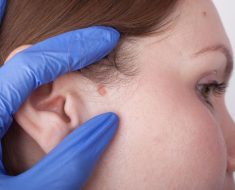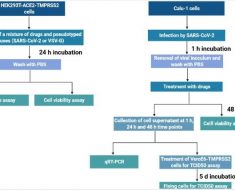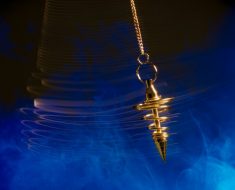“A Dangerous Son” takes a look at what parents try to do, and perhaps what they should do, with children who have mental illness and become violent.

Image courtesy of HBO
The new HBO documentary “A Dangerous Son” begins with a jarring scene involving a mother and her two children.
A voice says, “Don’t ever bring your son here.”
In the next moment, we hear “shut up,” and see a small boy hitting his sister in the back seat of a car in a parking lot.
The mother turns around in the driver’s seat. We see her horrified face. “Stop! Stop!” she cries.
But the boy keeps hitting his sister. When their mom tries to stop him, he opens his door and is part way out of the car before she grabs the back of his shirt.
Now the mother is driving in the rain, the sister is crying, and the boy is shouting. The camera settles on the little girl’s tear-stained face as she wails.
We see the mother biting her manicured fingernail.
And then we see the boy’s face with his clear skin, big long-lashed eyes, and pink mouth in a pout.
He’s a beautiful child.
“I keep working on my behavior,” he’ll say a bit later. “Do you go to hell if you don’t behave?”
A shortage of services
“A Dangerous Son,” directed and produced by filmmaker Liz Garbus, became available on demand today.
The documentary follows families through tussles, happy moments, and counselor visits.
Interspersed are comments from Thomas Insel, former director of the National Institute of Mental Health, and Andrew Solomon, author of “Far from the Tree,” which included interviews with Sue Klebold, the mother of one of the boys behind the Columbine High School shooting in Colorado in 1999.
We hear from Virginia Sen. Creigh Deeds, whose 24-year-old son Gus stabbed him before killing himself, as well as Liza Long, author of the essay “I Am Adam Lanza’s Mother.”
The film focuses on parents as well as children.
“What do you do when you have a son who is out of control? We wanted people to understand what it was like to be a parent of a son who could be violent,” Garbus told Healthline.
Anywhere from 13 to 20 percent of children in the United States have received a mental health disorder diagnosis, according to a 2017 report sponsored by the nonpartisan Milbank Memorial Fund.
Many more don’t get a diagnosis.
Finding effective treatment, or any treatment, is a victory for an activist parent.
Stacey Shapiro, the mother of the boy in the first scene, will put her son, Ethan, on a four-month waiting list for one of three beds in a residential facility in their state.
Most states have severe shortages of child psychiatrists.
Only 15 to 25 percent of children with psychiatric disorders get care from a specialist, the Milbank report notes.
Desperate parents end up turning to the police.
“It was the hardest thing I’ve ever had to do, to call the police to discipline my son,” one mother says in the documentary.
Of children in the juvenile justice system, some 70 percent have a mental illness.
“What we forget when someone has a mental illness and becomes violent is that we failed them,” Insel says in the film.
If a person with diabetes goes into a coma, we know that their treatment didn’t work. The same is true when people with mental illness have crises, Insel says.
Sometimes children resist care. Twice in the film we see a boy react badly when he’s told he’s being sent to a residential care center.
We see Ethan pulling Stacey’s hair from the back seat as she drives him to a center after the long wait for treatment.
But soon we see the two of them hugging and Stacey saying “I love you.”
During the many months following these families with troubled sons, Garbus was most surprised by the love she saw in their mothers, she told Healthline.
How Cruz slipped through
“A Dangerous Son” was inspired by the 2012 shooting in Newtown, Connecticut.
The documentary arrives as Americans reckon with the push for gun control following the mass shooting at a high school in Parkland, Florida.
Some 1,000 Americans have died in mass shootings since 2009.
Nikolas Cruz, 19, faces the death penalty for the deaths in Parkland.
In an ABC and Washington Post poll immediately after the shooting, 77 percent of those surveyed said better mental health screening and treatment could have prevented the tragedy, compared to 58 percent who said stricter gun laws could’ve done so.
Violence isn’t always predictable, gun control advocates note.
According to an analysis of mass shootings between 2009 and 2016 by the nonprofit Everytown for Gun Safety, a “red flag” such as threats of violence or substance use showed up in only 42 percent of the cases.
“Any one of us at the wrong time, wrong place, or wrong situation may get angry and aggressive, and if you have easy access to a gun, what could be a nasty comeback or a punch could be a gunshot,” Steven Jay Berkowitz, a psychiatrist and director of the Penn Center for Youth and Family Trauma Response and Recovery, told Healthline. “Better mental healthcare and gun control are not an either/or. We need both.”
How did Cruz slip through?
Two years before Parkland, a state agency had investigated a complaint that Cruz’s mother was neglecting him, but closed the case six weeks later.
The case report notes that Cruz was taking medication for attention deficit and hyperactivity disorder (ADHD) and had received an autism diagnosis.
After a breakup, he had been cutting his arms, spoke of wanting to buy a gun, and had put a swastika on his book bag.
But at the time, he didn’t appear to own a gun. He was receiving mental health services and taking medication as well as going to school.
Cruz’s mother had died in November, three months before the massacre. James and Kimberly Snead, who took him in, said that Cruz cooperated with their household’s rules.
Berkowitz sees a community failure.
“You hear a kid’s mother dies unexpectedly, where is everybody?” he said to Healthline. “I’m blaming all the adults who knew this kid was troubled and having a hard time. You bring in people in authority to help.”
Evidence but no action
Adam Lanza was 20 years old in 2012 when he killed himself, his mother, six adults, and 20 children at Sandy Hook Elementary School in Newtown, where his mother taught kindergarten.
Lanza had received a diagnosis of Asperger’s syndrome (now considered part of the autism spectrum) and had cut off contact with his brother and father, who lived elsewhere. Lanza lived with his mother.
In a moving account in The New Yorker, his father recounts evidence that his mother saw withdrawal, but not danger.
“She never confided to her sister or best friend about being afraid of him. She slept with her bedroom door unlocked and she kept guns in the house, which she would not have done if she were frightened,” he said.
Pushing the states
After a shooting at Virginia Tech in 2007, Virginia Sen. Creigh Deeds worked for a wave of mental health reforms.
But six years later, his son was denied emergency psychiatric care in a crucial six-hour window and died, after stabbing Deeds.
It turned out that a bed was available at other hospitals.
The state has passed more reforms, and Deeds continues to push for better crisis intervention care.
In “A Dangerous Son,” he speaks out against the stigma against mental illness and takes pride in his son.
“I was blessed to have him in my life for 24 years,” he says.
Parents need more help
Berkowitz believes parenting skills should be taught in schools.
“Parenting is really hard,” he told Healthline. “Parents need help before they become parents.”
They also need early help when they run into trouble. It should also be easy to get support. “Every parent should feel comfortable obtaining it,” Berkowitz said.
Parent support groups, teachers, and other child professionals are good sources of information, he said.
He recommends the group program The Incredible Years and the “1-2-3 Magic” series of books and videos.
Treating mental health isn’t simple, Insel notes in the film. Although we tend to want a “magic bullet,” he says, success usually requires “a lot of different interventions.”
The early diagnosis might be oppositional defiant disorder (ODD), which affects up to 16 percent of children and teens. It usually appears before the age of 8.
The signs include frequent tantrums, active defiance, setting out to annoy or upset others, blaming others for your mistakes, touchiness, being especially mean when angry, and taking revenge.
Some of these children go on to develop conduct disorder, which is more severe.
A younger child might lie for no reason, steal worthless items, and bully other kids.
He might move on to “delinquent” behavior, such as vandalism, threatening others with weapons, and forcing sex.
Treatment may include behavior therapy for the child, family therapy, coaching for parents and siblings, and cooperation with teachers.
Then there’s medication. It’s not uncommon for children with conduct disorder to also have ADHD. They may benefit from medication such as guanfacine (Intuniv).
They may have anxiety or depression, which is typically treated with antidepressants. Mood stabilizers like lamotrigine (Lamictal) can help.
Drugs of last resort include the antipsychotic medications aripiprazole (Abilify) or risperidone (Risperdal), which can cut aggression and irritability as well as help keep a child at home or in school.
Alarmed parents need to realize their child isn’t doomed.
“The vast majority of kids that have behavioral problems do not become killers,” Berkowitz said.
Even among those who get a conduct disorder diagnosis, most aren’t criminals or antisocial as adults, he noted.
In the course of the documentary, Ethan receives therapy and medication. His behavior improves.
At the end, we see the family at the zoo. Ethan spoons some of his ice cream into his sister’s mouth.
“If I don’t share, I can’t go to heaven,” he says.
Source: Read Full Article





